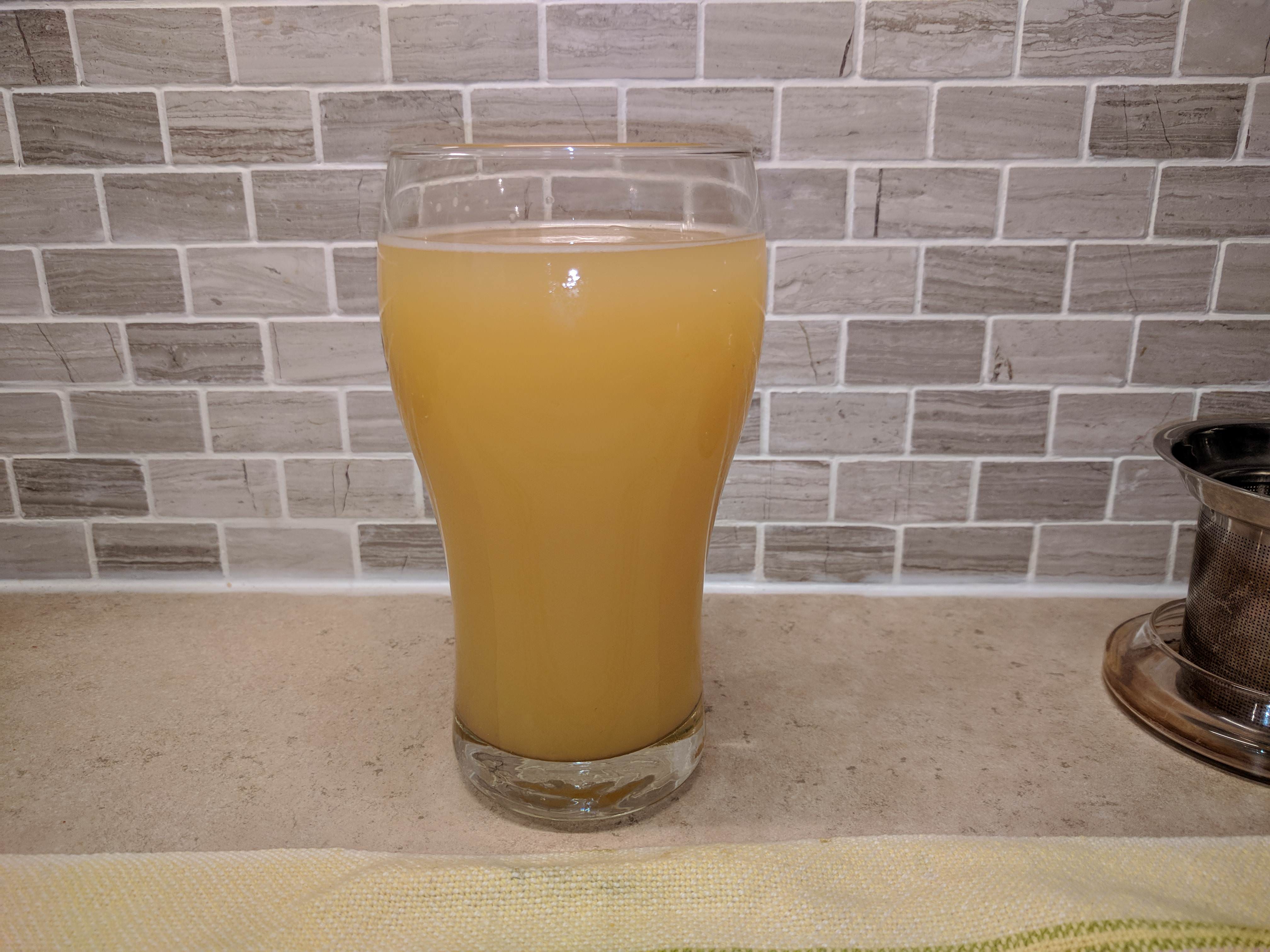SPECIFICATIONS:
OG 1.055
FG 1.011
IBU's...... 30-35 from bittering, not sure of utilization from all the late addition hops. Perception is much more than 35 IBU's though.
SRM 4
ABV 5.3% - This is definitely more of a "session" IPA - but, the heavy late hops and full body really make it drink like a regular IPA without the 6-8%+ abv of a lot of the popular IPA's and DIPA's
Edit: For those looking for recent versions, updates, and my most recent/current version of how I am making this beer - you will find that information in post #1418 in this thread. The original recipe is good as is... but I have shifted some of my practices, and also simplified/clarified some things in this original post..... Please check out #1418 for updates: https://www.homebrewtalk.com/showpost...postcount=1418
**I brew 6.5 gallons of finished beer (post boil)..... this allows me to leave some hop/trub behind in boil kettle and fermenter and get 5 gallons eventually into serving keg. If you finish with 5 gallons post boil, you might want to adjust hops down a bit.
6.5 gallons post boil
5.75 gallons into fermenter
5 gallons into keg
GRAIN BILL:
% and the actual amt. I use for 6.5 gallons @ 84% mash efficiency (your efficiency may vary)
44% Rahr 2 Row ( 5 lbs)
44% Golden Promise (or similar.... Pearl, Maris Otter) (5 lbs)
4% Flaked Oats (1/2 lb)
4% Flaked Barley 1/2 lb)
2% Wheat (1/4 lb)
2% Honey Malt (1/4 lb)
60 minute mash @152-154)
HOPS:
**60 Min. = .75 oz Warrior
**Flame Out = 1oz. each of Citra/Galaxy/Mosaic
**Chill to 160 or below and add 1oz. each of Citra/Mosaic/Galaxy. Stop chiller and allow hops to sit for 30 minute or so. Stir up/whirlpool wort every 5 minutes or so.
Chill to 62 and let hops settle out as much as possible. Transfer wort to fermenter. I tend to leave behind .75 gallons of true and hops (this is why I brew 6.5 gallon batch).
**Dry Hop #1- At day 5-7 - add the following to primary fermenter:
1.5 oz. Citra
1 oz. Mosaic
.5 oz. Galaxy
**Dry Hop #2 - Around day 12, transfer to CO2 purged dry hopping keg with
1.5 oz. Citra
1 oz. Mosaic
.5 oz. Galaxy
(I use this strategy:
http://www.bear-flavored.com/2014/09/how-i-dry-hop-my-ipas-with-no-oxygen.html )
Day 14-15 - Jump from Dry hop keg to serving keg. Force carbonate to moderate/moderate-low.
WATER PROFILE:
I use 80% RO water, 20% Hard (Carbon Filtered) tap water in Mash, 87% RO in sparge water:
I add per gallon of mash and sparge water -
Gypsum = .2 grams/gallon
CaCl = .6 grams/gallon
Epsom = .1 gram/gallon
Canning Salt = .2 grams/gallon
Lactic Acid = .5ml/gallon mash, .25 ml/gallon sparge ( I am using 5 gallons mash water and 6 gallons sparge water).
Using B'run Water
Ca = 96
Mg = 12
Na = 28
Sulfate = 67
Chloride = 128
Bicarbonate = 70
Mash pH = 5.37-5.42
Final runnings pH = 5.60
Pre-boil Kettle pH = 5.40-5.45
Post Boil pH = 5.3-5.35
Water Profile - the simple solution:
***Many people ask about a more general guide to water because they do not know what their own water profile is, or they have not made the jump to using a water profile software. I use B'run water, and the above profile. However, if you just want to get in the ballpark of something "similar" to start with..... The simplest solution is this:
100% RO water for both mash and sparge.
Per 5 gallons of mash water: 1 tsp of CaCl + 1/2 tsp Gypsum
Per 5 gallons of sparge water: 1 tsp of CaCl + 1/2 tsp Gypsum
This should bring you in around 140 Chloride and 80 Sulfate.
This does not take into account trying to get Na or Mg numbers. It ignores bicarbonate and as it is 100% RO, it should bring your mash pH in around 5.41 without any acid addition.
ROUGH estimate of grams to tsp of minerals:
1/4 tsp Gypsum = .9 grams
1/4 tsp CaCl = 1.1 grams
1/4 tsp Epsom Salt = 1.3 grams
1/4 tsp Canning Salt = 1.8 grams
FERMENTATION
Yeast - Conan(vermont IPA), 1318 is also a yeast many choose to use in beers like this.
I tend to start fermentation off around 62 at let it free rise to 66-68 degrees through the first 3 days or so of fermentation. At that point, I like to move it somewhere that it can finish off in the 68-70-72 range.
OTHER THOUGHTS/NOTES:
I keep almost everything the same in brewing IPA's to this style. However, I do mix up the hops. I always bitter with warrior, and always use 4 sets of 3 ounce additions at Flameout, Whirlpool, Dry Hop #1, Dry Hop #2....... but, not always the same hops. I sometimes do 100% Citra. I sometimes do equal parts of Citra/Mosaic/Galaxy for all 4 additions (Grapefruit!!!!), I some times do equal parts (1.5 ounces) citra/mosaic at all 4 additions... But always the same basic amount, in the same basic schedule.
The water is important for getting this "style" of IPA. It is important to go higher on chloride and lower on gypsum (I think). I also ...... and I don't know exactly why...... have had more success including some my high bicarbonate water and using lactic acid to shoot for pH in the 5.4 range (as opposed to a lower pH).
I have found this strategy to get very much in the ball park of these types of beers...... Hazy, full bodied, juicy/fruity hops.













































![Craft A Brew - Safale BE-256 Yeast - Fermentis - Belgian Ale Dry Yeast - For Belgian & Strong Ales - Ingredients for Home Brewing - Beer Making Supplies - [3 Pack]](https://m.media-amazon.com/images/I/51bcKEwQmWL._SL500_.jpg)















